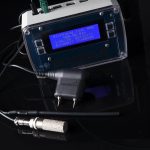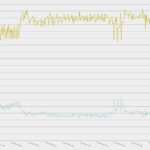Moisture Measuring

When measuring moisture many water damage technicians regard Equilibrium Relative Humidity (ERH) as a reliable moisture measuring method. Recommended target moisture measurment levels for floor screeds in British Standards, such as BS8203, are given as an ERH value.
WHERE DO WE BEGIN?
We can measure moisuture by measuring the ERH within hygroscopic material by measuring the Relative Humidity (RH) of a small pocket of air, within the material, or on the surface. The measured moisture content of a screed, for example, can be inferred by measuring the ERH within a hole drilled below the surface or in a Surface Mounted Box fixed to the screed surface. Remember, it’s essential that you allow sufficient time to reach equilibrium, about 2-4days. While you can infer the moisture content, to comply with the British Standards, you only need to know the ERH of the material.
Imagine that you set up your moisture measuring points, you allow enough time to equilibrate and return to the site to take a set of RH readings. What level of trust can you have in the accuracy of those readings? Will they be Equilibrium Relative Humidity values?
UNDERSTANDING THE CHALLENGE
I recently noted some observations that may help you answer that question. Remote moisture measuring via automatic data logging of ERH values was set up in a series of surface-mounted boxes, taking readings every hour. The results (see Figure1 below) indicate the challenge we face when using this method of moisture measurement. The chart demonstrates the daily fluctuation in temperature. The difference is at least 2°C and up to 4°C. During this cycling of the temperature, the ERH responds by also fluctuating. In this instance, data logging shows this is to be as much as 9%. Therefore the moisutre measurement value a technician would read when visiting the site to take an ERH at breakfast time could be 9% higher than when visiting after lunch.

WHAT DATA DO YOU NEED?
The temperature differential causes the change in RH within the measured airspaces. Yet remember that the ERH quoted in the British Standard is independent of temperature. The relative humidity in that small space will reach equilibrium with the material’s moisture content, regardless of temperature. The problem is that this change to reach equilibrium takes several days, while these temperature fluctuations are happening at a much faster rate. So when ambient temperatures are rapidly fluctuating, the ERH values require interpretation. If you can data log the readings or use remote monitoring systems, you will have a clearer view of what is really happening.
Call now or fill out our contact form, if you need assistance with moisture damage in your property.